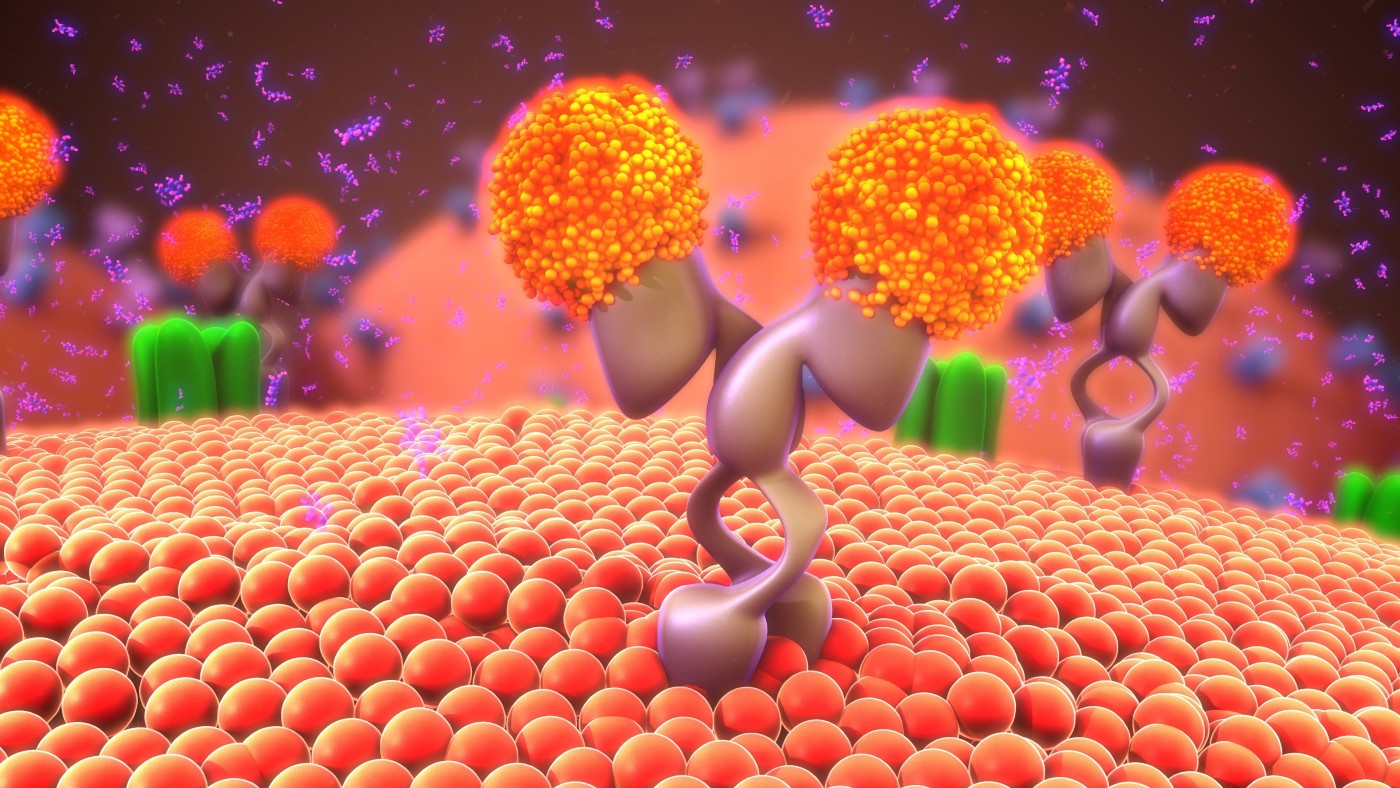3-D Structure of CCR2 Receptor, While Bound to Its Inhibitors, Captured for 1st Time
Written by |

Scientists unraveled the 3-D structure of a key receptor linked to inflammation in multiple sclerosis (MS) — the CC chemokine receptor 2 (CCR2) receptor — when it is bound to two inhibitor molecules simultaneously. This potentially important finding, which allows scientists to see how these molecules fit together, could aid in developing better therapeutics that target the CCR2 receptor.
The study, “Structure of CC chemokine receptor 2 with orthosteric and allosteric antagonists,” was recently published in the journal Nature.
CCR2 is a protein that sits on the membrane of immune cells, working to direct these cells’ migration toward sites of inflammation. The receptor, together with its ligands (i.e., molecules that bind the receptor to activate its signaling pathways) have been implicated in several inflammatory and neurodegenerative diseases, including MS, asthma, diabetic nephropathy, and cancer. Its prominent role in disease has made the receptor and its ligands of considerable interest, with numerous preclinical studies and clinical trials into its workings currently underway.
Scientists at the Skaggs School of Pharmacy and Pharmaceutical Sciences at University of California San Diego now report having unveiled the 3-D structure of CCR2, while bound to two inhibitors.
Understanding how the receptor and inhibitors interact structurally is fundamental to developing anti-inflammatory drugs that bind and inhibit CCR2.
“So far drugs that target CCR2 have consistently failed in clinical trials,” said Tracy Handel, PhD, a professor at the pharmacy school and one of the study’s lead authors, in a press release. “One of the biggest challenges is that, to work therapeutically, CCR2 needs to be turned ‘off’ and stay off completely, all of the time. We can’t afford ups and downs in its activity. To be effective, any small molecule drug that inhibits CCR2 would have to bind the receptor tightly and stay there. And that’s difficult to do.”
CCR2 receptors sitting on an immune cell’s membrane have two parts, one facing the exterior of the cell (extracellular) and the other the interior (intracellular). Chemokines, or small signaling molecules, bind to the extracellular part of the receptor. The very act of binding triggers changes, whose information is then passed to the cells’ interior, initiating a signaling cascade of events. These events culminate, ultimately, with the immune cells moving to follow chemokine trails toward sites of inflammation.
Researchers used X-ray crystallography to determine the 3-D structure of CCR2 bound to the two inhibitor molecules simultaneously, one at each end.
“Receptors that cross the cell membrane are notoriously hard to crystalize. To promote crystallization, we needed to alter the amino acid sequence of CCR2 to make the receptor molecules assemble in an orderly fashion. Otherwise, when taken out of the cell membrane, they tend to randomly clump together,” said Irina Kufareva, PhD, another study lead author and a project scientist at the Skaggs school.
The team discovered that the two inhibitors actually turn off the CCR2 receptor via two different, but reinforcing, mechanisms: while one binds the receptor on its extracellular part, so as to block the binding of its ligands, the other inhibitor binds to the receptor’s intracellular part, preventing the propagation of the inflammatory signaling.
“It’s our hope that this new structure of CCR2 with two bound inhibitors will help optimize current and future drug discovery efforts,” Kufareva said.





